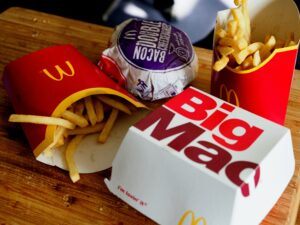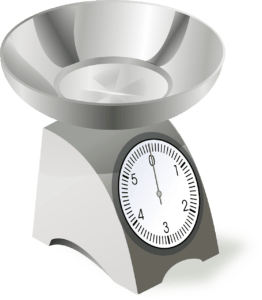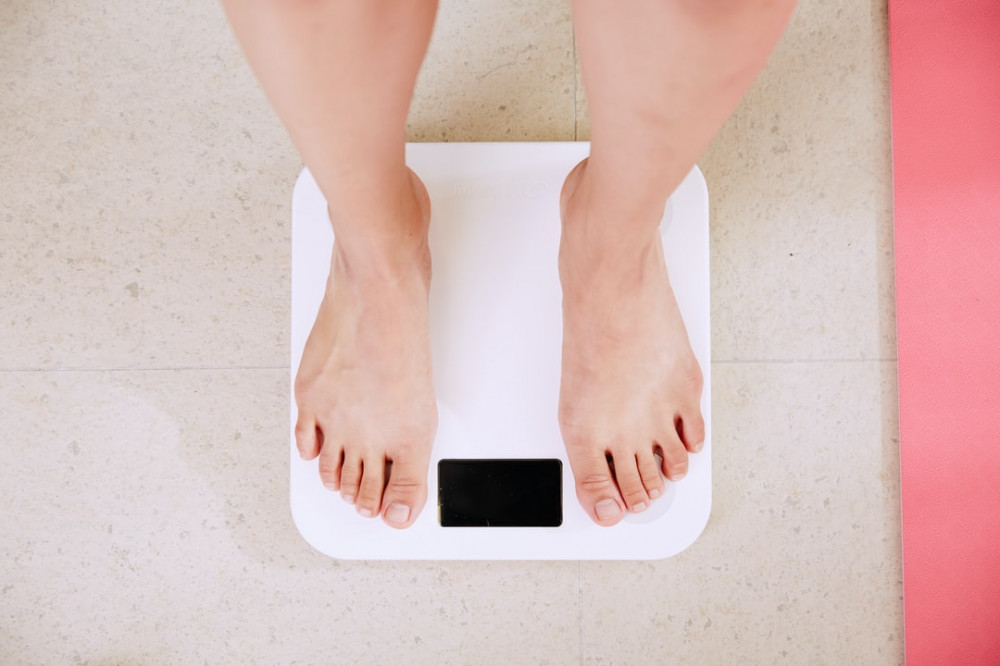Losing weight and transforming your body is probably one of the simplest things to do. Yet, so many people over complicate it. And, even though it may be simple that doesn’t make it easy since literally millions of people struggle to permanently transform their bodies and keep the fat off for good.
The bottom line about how to lose weight by counting calories, is this:
If you use (burn) more calories than you ingest on a given day, you will create a caloric deficit and burn fat daily.
That’s it.
Your body is constantly performing metabolic functions to keep you alive and functioning. When there is enough caloric energy from food present, your body uses that energy to keep you going. If you have a surplus of calories, your body stores them as fat, and if there is a shortage of calories at any given moment, your body releases energy from fat cells (burns the fat) to perform metabolic functions.
What Is A Calorie Anyway?
Before we get into calories, and how many you need to eat for weight loss, let’s define a calorie.
Simply put, a calorie is simply a unit of measurement of energy. It’s just like measuring feet, inches, grams, pounds, or any other unit of measurement.
 When we refer to a “Calorie” in weight loss terms, we are actually talking about Kilo Calories. So, don’t be alarmed if you see a food label or something that reads Calories as Kcal.
When we refer to a “Calorie” in weight loss terms, we are actually talking about Kilo Calories. So, don’t be alarmed if you see a food label or something that reads Calories as Kcal.
Definition of a calorie:
Scientifically, a calorie is the amount of heat energy required to raise the temperature of 1 kilogram of water by 1 degree Celsius.
But let’s keep things simple OK?
Just remember, calories are simply a way we measure how much food energy we are ingesting and burning. The body is constantly burning up energy every day, and if we eat less than we burn, we lose weight 🙂
How Many Calories Should I Eat To Lose Weight?
So, the first thing every new client wants to know is “How many calories should I eat to lose weight?”
There are so many apps and calculators and formulas available to determine this. However, the key point that so many people miss is that these calculators and formulas are merely an estimation.
 A great place to start is by using a BMR calculator, or formula. The 2 main methods professionals use are the Katch McArdle Formula and the Harris-Benedict Formula. These are formulas that calculate your Basal Metabloic Rate (BMR). Your BMR is basically how many calories an invalid who is bed-ridden needs to consume in order to not die. Then they use a multiplier or coefficient to factor in your activity levels on a daily basis. This tends to be very subjective, and most beginners overestimate their daily activity levels.
A great place to start is by using a BMR calculator, or formula. The 2 main methods professionals use are the Katch McArdle Formula and the Harris-Benedict Formula. These are formulas that calculate your Basal Metabloic Rate (BMR). Your BMR is basically how many calories an invalid who is bed-ridden needs to consume in order to not die. Then they use a multiplier or coefficient to factor in your activity levels on a daily basis. This tends to be very subjective, and most beginners overestimate their daily activity levels.
Here’s the BMR Formula:
- Males: 66.47 + (6.24 × weight in pounds) + (12.7 × height in inches) − (6.75 × age in years).
- Females: BMR = 65.51 + (4.35 * weight in pounds) + (4.7 * height in inches) – (4.7 * age in years)
You’ll just need to plug in your weight, height, and age using the appropriate formula.
The Katch McArdle Formula requires you to know your lean body mass and percent body fat, so to get started easily, I recommend using the Harris-Benedict Formula:
The Harris-Benedict Formula requires that you know your BMR. It simple multiplies your BMR by an activity factor to give you what’s called your Total Daily Energy Expenditure, commonly referred to as your TDEE.
Harriss-Benedict Formula:
Sedentary (little or no exercise): TDEE = BMR x 1.2
Moderately Active (moderate exercise/sports 3-5 times per week) TDEE = BMR x 1.55
Very active (hard exercise/sports 6-7 days a week): TDEE = BMR x 1.725
If you are extra active (very hard exercise/sports & a physical job): TDEE = BMR × 1.9
Now, all this math is great, but PLEASE remember this is just a starting point. It is an estimation to give you a place to begin, nothing more. I really can’t emphasize that enough.
You must diligently track your food intake (calories) for 2 weeks, weighing yourself daily. And, you must do your best to stay right at your TDEE, no more, no less. If your weight went up, cut the daily calories by 100-200, and if it went down, go another 1-2 weeks – you’re losing weight 🙂 It is a process and a journey, and you won’t be perfect right away, so don’t sweat it.
Methods Of Measuring Your Caloric Intake
There are a few main ways we can measure how much we eat each day. I’m gonna explain them from least accurate to most accurate. First is called the “eyeball” method which is least accurate. For proteins, a palm-sized portion is about 4-5 ounces of meat. For fruits its pretty easy – 1 apple, a handful of blueberries, or 1 banana could be a portion size. For veggies, you can use the same method as fruits, but just double the amount. For example, 2 fist-sized portions of broccoli. Veggies are the least caloric dense foods, and you get to eat the most for the same or even fewer calories.
The second method is by using measuring cups and tablespoons etc. This is much more accurate for tracking calories, and pretty self-explanatory. 1 level cup of rice = 1 cup of rice, etc. Many people “cheat” especially with fats. They’ll take a giant glob of peanut butter which could be 3 tablespoons and call it 1 tablespoon – a difference of about 200 cals!
 The third method is by weight your food using a food scale. Many people bok at this, but when you perform a few reps, its really super easy to do. Here’s the proper way to measure with a food scale – and the most precise. I also recommend picking up an electronic food scale which you can get at low cost.
The third method is by weight your food using a food scale. Many people bok at this, but when you perform a few reps, its really super easy to do. Here’s the proper way to measure with a food scale – and the most precise. I also recommend picking up an electronic food scale which you can get at low cost.
- Place your plate or bowl right on the scale.
- Zero the scale out, and set the unit of measurement to grams. Measuring in grams is the most precise way to measure all your food, and you can often eat more!
- Slowly add your food onto your plate/bowl until you reach the desired number of grams according to your meal plan.
- Eat!
People make things more difficult in their minds than it needs to be. It’s really that easy.
Easiest Way To Track How Many Calories You Eat
 The easiest way to track your calories is by using your smartphone. You have your phone with you wherever you go, so you can even track while dining out, etc
The easiest way to track your calories is by using your smartphone. You have your phone with you wherever you go, so you can even track while dining out, etc
The best app I’ve found for this is MyFitnessPal. It has the largest database of foods out there, and you can even add your own custom foods if you choose. Plus it links to workout apps, and you can track your weight and goals there as well. It’s super easy to use and I use it every day. Best app, hands down. The best part – its free!
Conclusion
So, I’ve just showed you how to lose weight by counting calories. First we defined a calorie as a unit of measuring energy. Then I showed you how to calculate your starting point for how many calories to eat to lose weight. And, then we touched on measuring and tracking your daily caloric intake. Do this consistently, and you’ll lose weight I promise.
If you have any questions on any of this stuff, please leave me a comment below, and I will get back to you with an answer.
I wish you the best on your body transformation!

